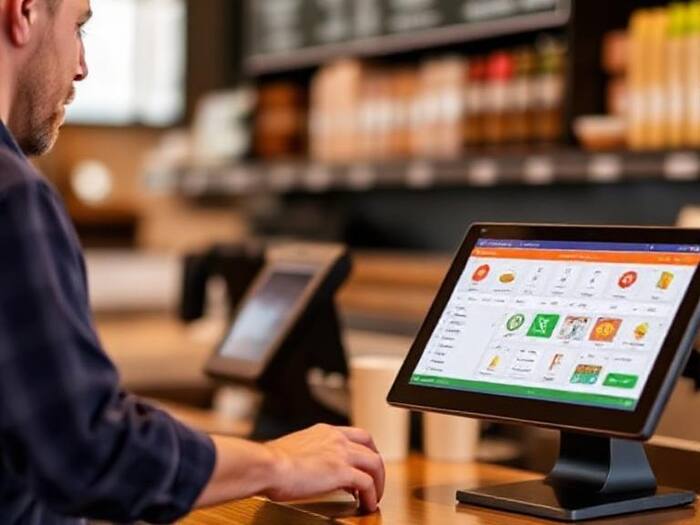Managing a restaurant requires more than great food and service. It is about coordination, timing, and precision. Every ingredient, order, and transaction has to be tracked accurately to avoid waste and financial loss. When the point-of-sale (POS) system works hand in hand with inventory tracking, it creates a seamless flow of information that makes restaurant operations more efficient and less stressful. This integration allows teams to focus on what matters most: serving customers well while maintaining control behind the scenes.
Real-Time Inventory Tracking
A major benefit of connecting the POS system with inventory management is real-time tracking. Each time an order is processed, the stock levels of the ingredients used are automatically adjusted. This means staff no longer need to manually update spreadsheets or guess how much of a product remains in storage.
With efficient restaurant inventory solutions, managers can monitor inventory levels as they change throughout the day. They can instantly see which items are running low or nearing expiry, preventing shortages and avoiding excess purchases. This continuous visibility helps reduce food waste, ensures menu accuracy, and allows for timely restocking decisions.
Smarter Purchasing and Forecasting
When POS data and inventory records are connected, restaurants gain valuable insight into purchasing trends. The system tracks which menu items are selling quickly, identifies slow-moving ingredients, and predicts future demand based on sales patterns. This data helps managers order the right quantities—enough to meet demand but not so much that food spoils before it’s used.
Over time, this smarter approach to purchasing improves cash flow and reduces storage costs. Instead of reacting to shortages or relying on intuition, restaurant owners can plan orders around real sales data. That means fewer wasted ingredients, better supplier management, and more consistent budgeting.
Streamlined Staff Communication
In a busy restaurant, miscommunication can cause unnecessary stress. Without integration, the kitchen might not know when a particular dish runs out, or the front-of-house team might continue taking orders for items no longer available. By linking POS and inventory systems, everyone has access to the same, up-to-date information.
When ingredients are nearly depleted, alerts can notify both the kitchen and serving staff immediately. This prevents confusion during service, improves coordination, and helps maintain customer satisfaction. With accurate information available in real time, teams can focus more on service quality and less on troubleshooting.
Reduced Waste and Improved Cost Control
Inventory inaccuracies are one of the main reasons restaurants lose money. When ingredients are ordered without precise knowledge of current stock levels, excess items often go unused and end up discarded. Integrated systems eliminate much of this guesswork. Every sale, ingredient, and recipe adjustment is logged automatically, helping managers spot inefficiencies early.
By keeping track of exact usage, restaurants can identify where waste occurs—whether through overproduction, poor portion control, or spoilage. The insights gained make it easier to adjust menus, recipes, or portion sizes to improve cost control without affecting food quality. Over time, small changes in these areas can lead to noticeable savings.
Data-Driven Menu Decisions
POS and inventory integration also supports better decision-making about the menu itself. Managers can see which dishes sell best, which use high-cost ingredients, and which tend to create waste. This allows them to refine the menu—keeping profitable items, reworking low performers, or introducing new options that use ingredients more efficiently.
With clearer data, restaurants can balance creativity with practicality. They can base menu adjustments on solid evidence rather than assumption, ensuring that every dish contributes positively to the business’s bottom line.
Improved Accuracy in Reporting and Auditing
Manual stock checks and handwritten logs often lead to errors that go unnoticed until they affect performance. Integrated systems automate this process by maintaining precise records of every purchase, sale, and ingredient used. These digital records simplify financial reporting and make internal audits faster and more accurate.
This level of transparency builds accountability among staff and reduces discrepancies between expected and actual stock levels. It also helps restaurants meet regulatory requirements and maintain better supplier relationships by ensuring accurate billing and delivery tracking.
Conclusion
Integrating POS systems with inventory management is one of the most practical steps a restaurant can take to improve operations. Real-time tracking ensures accuracy, smarter forecasting reduces waste, and better communication keeps the entire team aligned. The connection between sales and stock also supports more informed menu planning and tighter cost control. Together, these improvements simplify management, save money, and create a smoother, more efficient workflow that benefits both staff and customers alike.
Read Also: What Equipment Purchases Are Essential When Starting a New Restaurant


